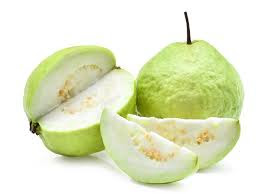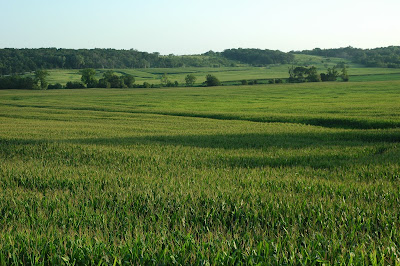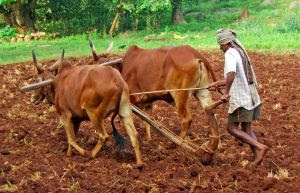Milling machines are very versatile in nature. They are usually
used to machine flat surfaces, but can also produce irregular surfaces. They
can also be used to drill, bore, cut gears, and produce slots. The type of
milling machine most commonly found in student shops is a vertical spindle
machine with a swiveling head. A milling machine removes metal by rotating a
multi-toothed cutter that is fed into the moving work piece. The spindle can be
fed up and down with a quill feed lever on the head. The bed can also by feed
in the x, y, and z axes manually. Once an axis is located at a desired position
and will no longer be fed, it should be locked into position with the Gibb
locks.
Most milling machines are equipped with power feed for one or more
axes. Power feed is smoother than manual feed and, therefore, can produce a
better surface finish. Power feed also reduces operator fatigue on long cuts.
On some machines, the power feed is controlled by a forward reverse lever and a
speed control knob.
Trimming the head
The head of a vertical milling machine can be tilted from side to
side and from front to back. This allows for versatility of the machine, but
these adjustments can drift. Occasionally, one should check and adjust the head
so that the spindle will be normal to the plane of the table.
Install a dial indicator into the spindle so that the dial is
offset at least six inches from the axis of the spindle and the indicator probe
is facing down. Lower the spindle until the dial indicator contacts the table
then registers about one half of a revolution. Set the dial indicator is toward
you and set the bezel to zero. Rotate the spindle by hand 180 degrees. If the
dial indicator still reads zero, the spindle is aligned front to back. If not,
adjust the head until the dial reads half of the original reading and iterate
the entire process until the error falls within acceptable limits. Repeat the
process with the dial displaced left and right to alight the head side to side.
Squaring of the vise
Work on a milling machine is most often held in a vise clamped
onto the bed. To make features aligned with the edges of the stock, it's
necessary to align the vise with the feed axes of the mill. To do this, mount
the vise on the bed and secure it with T-bolts, but only lightly so as to
permit adjustment of the orientation of the vise. Mount a dial indicator in the
spindle of the machine with the probe facing away from you. Lower the spindle
and run the bed of the table back until the fixed jaw of the vise is in contact
with the indicator and further until the indicator registers one half of a
revolution. Set the bezel to zero. Use the cross feed to run the indicator
across the face of the vise. If the vise is squared, the inductor will remain
at zero. If the dial indicator does not read zero, tap lightly with a soft
hammer to realign the vise reduce the indicator reading to half of its previous
value. Iterate this procedure until the dial indicator reads zero through the
full travel across the face of the vise. Tighten down the T-bolts be careful
not to change the vise orientation. Recheck the alignment of the vise.
Different types of milling cutters
In vertical mills, milling cutters with solid shafts are usually
used. Milling cutters with keyed holes are predominantly for use in horizontal
mills. End mills are designed for cutting slots, key ways and pockets. Two
fluted end mills can be used to plunge into work like a drill. End mills with
more than two flutes should not be plunged into the work as well. Ball end
mills can produce a fillet. Formed milling cutters can be used to produce a
variety of features including round edges.
Removing and installation of milling cutters
To remove a tool, move the quill to the highest position and lock
it in place. Then, engage the brake while loosening the draw bar with a wrench.
Ensure that the draw bar's threads are still engaged in the collets. Tap on the
end of the draw bar to release the collets from the spindle. If the threads of
the draw bar are not engaged, the milling cutter will fall, and could be
damaged. Finally, unscrew the drawbar from the collets.
To install a tool, place the desired milling cutter in collets
that fits the shank of the cutter. Insert the collets into the spindle. Ensure
that the key way on the collets mates properly with the key in the spindle.
While holding the tool with one hand, start the threads of the draw bar into
the collets by hand. Use a wrench to tighten the drawbar down with one hand
while holding the brake.
Climb verses conventional milling
During milling, one should be aware of the difference between
conventional, and climb milling. In conventional milling, the work piece is fed
into the rotation of the cutter. This type of cut requires lower forces and is
preferred for roughing cuts. In climb milling, the work moves with the rotation
of the cutter. This produces a better finish. It is not recommended if the work
piece cannot be held securely or cannot support high forces.
Calculating speeds and feeds during milling
Cutting speed refers to the speed at which the tool point of the
cutter moves with respect to the work measured in feet per minute. Feed is the
rate at which the work moves into the cutter measured in feed per tooth
revolution. Feeds and speeds affect the time to finish a cut, tool life, finish
of the machined surface and power required of the machine.
The cutting speed is mostly determined by the material to be cut
and the material of the tool. To find the right speed for any task, refer to
the Machinery's Handbook or other reference. To calculate the proper spindle
speed, divide the desired cutting speed by the circumference of the tool
expressed in feet. The feed rate depends on the width and depth of cut, finish
desired and many other variables. To calculate the desired feed setting from
the feed rate, multiply feed per tooth per revolution by number of teeth and
rpm of the spindle.
Setting of the spindle speed
The setting of the spindle speed is varied by changing the
geometry of the drive train. On many modern machines, it can be adjusted
continuously with a hand crank. The spindle must be turning to make the
adjustment. A dial indicator reads the speed in rpm.
Using an edge finder
Before doing precise work on a milling machine, you must be sure
to locate the edges of a part accurately. An edge finder is designed to help
you do this. An edge finder is composed of two concentric cylinders, spring
loaded together. To use it, offset the two halves slightly so that there is a
wobble as it spins. Then, move the part into the tool slowly. The edge finder will
center up, and then break out of concentricity suddenly. At that point, reset
the dial indicator or digital readout for that axis of the machine to a value
equal the radius of the edge finder. Repeat the process at least once.
Using the micrometer dials
Most milling machine manual feeds are equipped with dial
indicators. If you know how far you want to feed the bed, you can set the dial
indicator to that number (in thousandths of an inch). Just turn the locking
ring counterclockwise to free the dial indicator, set the dial, and lock in the
setting. Be certain that the backlash in the mechanism driving the table is
taken up prior to setting the dial indicator.
Squaring Stock
To create a square corner on a part, first orient an already
finished edge vertically in the vise and clamp lightly onto the part. Set a
machinist's square against the finished edge and the bottom of the vise.
Lightly tap the part with a plastic hammer to align it with the square. Clamp
the vise down securely. Now the top edge of the part is ready to be milled to
horizontal.
Face milling
In face milling, it is often necessary to create a flat face on a
large part. This can be done best with a facing cutter. Select a cutter about
one inch wider than the work piece so that the facing can be accomplished in
one pass.








